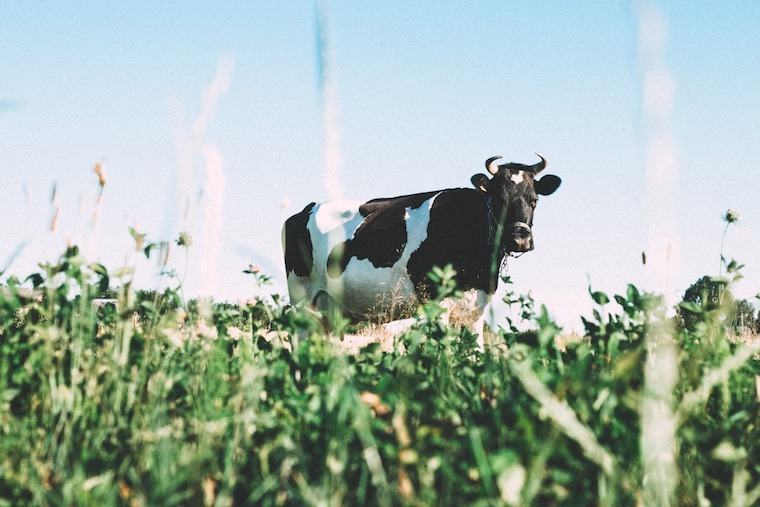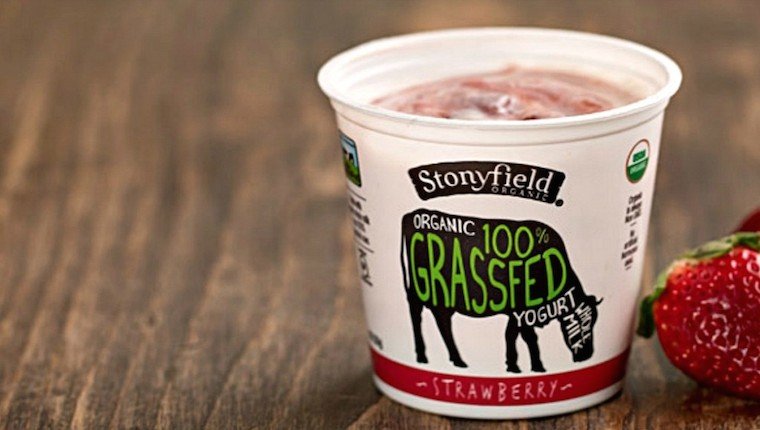Put Down the Skim Milk: Full-Fat Dairy Is Having a Major Moment
Sorry skim milk and fat-free yogurt, but you're starting to feel as dated as Jazzercise and the Thighmaster.
That would be because, thanks to a deluge of new research suggesting that saturated dairy fat isn’t the death sentence doctors once claimed it to be (quite the opposite, in fact), science is once again proclaiming whole milk, yogurt, and cheese to be healthy diet must-haves.
World-renowned doctors such as David Ludwig and Drew Ramsey have written books extolling the virtues of a fat-rich diet, dairy products included. Food brands are big-time investing in their full-fat dairy offerings (more on that later), while nutrition arbiter Michael Pollan went so far as to say “low-fat milk is kind of a joke.”
“The scientific evidence that tells us saturated fats are harmful has been significantly questioned by the medical community,” says Dr. Ramsey, a spokesperson for Stonyfield Organic. “This doesn’t mean to run out and eat them with abandon, but it does mean that products like full-fat yogurt are a healthy choice.”
Surprised? Keep reading.

Busting the full-fat dairy myth
At the heart of this dairy debate are saturated fat and cholesterol. In the ‘60s, when the low- and non-fat craze first took hold, these two substances were linked to heart disease and obesity. But flash forward to today, and despite the prevalence of skinny lattes and fat-free yogurt, the US population is heavier than ever. Meanwhile, as Dr. Ramsey points out, “the majority of observational studies do not find an association between dairy products and a risk of heart disease.”

{{post.sponsorText}}
Not only that, but current research indicates that eating full-fat dairy products actually decreases the risk of many illnesses, including colon cancer, diabetes, and obesity.
So what gives? Dr. Ramsey suspects that since full-fat dairy is highly satiating, it can curb the urge to mindlessly snack on less natural foods. Plus, he says, “People often forget that the diets from around the world, like the Mediterranean diet, have always utilized fermented dairy products. The healthiest diets have dairy in them.” (And we're pretty sure those Blue Zone residents aren't putting fat-free yogurt in their tzatziki.)

Dairy fat makes a comeback
As those in-the-know become increasingly full-fat curious, brands are responding with new product lines—all of which have come a long way from their 1950s forbearers.
One of the first to enter the arena was Smári, a California-based brand of organic Icelandic-style yogurt. “I’ve always been a big fan of dairy fats,” says founder Smári Ásmundsson, who notes that when a product is higher in fat, less sugar is required to make it taste good. (And there's a lot of sugar in most yogurts.)
Nonetheless, when he launched his company in 2013, he did so with only non-fat flavors. “Three years ago there was essentially no market for whole milk yogurt, so we did what we needed to do to survive,” he explains. A year-and-a-half later he decided to take the full-fat plunge, and the whole milk line did amazingly well—so much so that his vanilla whole milk yogurt is the best-selling flavor in the company. “For our next product launch we will be focusing purely on whole milk,” he says.

Stonyfield is also betting the (dairy) farm on the healthy fat renaissance with several new products, including a 100 percent grass-fed whole milk yogurt. Why grass fed? Echoing a recent study, Dr. Ramsey notes that when cows eat as nature intended them to, the fats in their milk become even healthier.
“In organic and grass-fed dairy products you have a 60 to 80 percent increase in healthy fats that we want people to eat, like CLA, omega-3s, and monounsaturated fats, and a significant decrease in the saturated fats that have people concerned,” he explains. “So going organic and grass fed is going to improve the nutritional profile of yogurt in exactly the way we would want.”
Even cottage cheese—the OG diet snack—is getting the full-fat treatment, thanks to SoCal brand Good Culture. “We launched as an organic brand with higher levels of milk-fat and the response has been amazing,” says co-founder Jesse Merrill. “People are looking to real food as their primary source of nutrition, and they want full-fat dairy products that are satiating, delicious, less processed, and contain less junk.” (Skim milk, we’re looking at you.)
Should we still be counting fat grams?
According to Dr. Ramsey, there’s not a specific amount of fat we should be aiming for each day. Rather, he says, “When I work with patients nutritionally I’m trying to get them to increase the nutrient density of their diet... eating plant-based with lots of seafood and fermented foods like grass-fed and organic yogurts.” One less thing to worry about on your fitness tracker—and one more thing that's about to seem positively retro.
Yes, healthy fats are still healthy when they're turned into frozen desserts—these three super delicious recipes are proof. And if you're still not into dairy, you'll want to try these creamy, cheeseless pasta dishes.
Loading More Posts...
